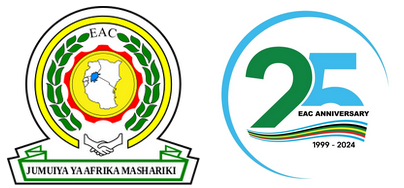Republic of South Sudan
The Republic of South Sudan is also referred to as the youngest nation in Africa after gaining independence on 9 July 2011.
South Sudan became a full member of the East African Community on 5 September, 2016.
Key facts
Joined EAC: April 2016
Population: 14.7 million (2023 Statistics)
GDP (nominal): US$ 14.3 Billion (2023 Statistics)
Official language: English
Timezone: GMT + 2hr
Currency: South Sudanese Pound (SSP)
Geography
Area: 619,745 sq. km
Coastline: none
Capital city: Juba
Population density (per sq. km): 13.33
South Sudan is bordered by Sudan to the north, Ethiopia to the east, Kenya to the southeast, Uganda to the south, the Democratic Republic of the Congo to the southwest, and the Central African Republic to the west. It includes the vast swamp region of the Sudd, formed by the White Nile and known locally as the Bahr al Jabal.
Languages
English is the official languages; while Arabic (of Juba and Sudanese variants) and other languages such as Dinka, Nuer, Bari, Zande, Shilluk are widely spoken.
Communications
Country code 211; internet domain ‘.ss’.
Public Holidays
New Year's Day, Peace Agreement Day (9 January), Easter Sunday, International Labour Day (1 May), SPLA Day (16 May), Independence Day (9 July), Eid al-Fitr (End of Ramadan), Martyrs’ Day (30 July), Eid al-Adha (Feast of the Sacrifice), Christmas Day, Boxing Day and Republic Day (28 December).
Religious festivals whose dates vary from year to year include Good Friday, Eid al-Fitr (End of Ramadan) and Eid al-Adha.
Transport
South Sudan has 248 km of narrow-gauge, single-track railroad.
The busiest and most developed airport in South Sudan is Juba Airport. Other international airports include Malakal, Wau, and Rumbe.
International relations
South Sudan is a United Nations member state, a member state of the African Union and of the Intergovernmental Authority on Development. In July 2012, South Sudan signed the Geneva Conventions. South Sudan has also applied to join the Commonwealth of Nations, considering that it was part of the British Empire, and has 2 Commonwealth Republics, Kenya and Uganda as neighbouring states.
Topography
The Imatong Mountains are located in the southeast of South Sudan in the erstwhile state of Eastern Equatoria, and extend into Uganda. Mount Kinyeti is the highest mountain of the range at 3,187 metres and the highest in the whole of South Sudan. The range has an equatorial climate and has dense forests supporting diverse wildlife.
The Sudd is a vast swamp in South Sudan, formed by the White Nile, comprising more than 15% of the country's total area; it is one of the world's largest wetlands.
Climate
South Sudan has a climate similar to an Equatorial or tropical climate, characterized by a rainy season of high humidity and large amounts of rainfall followed by a drier season. The temperature on average is always high with July being the coolest month with an average temperatures falling between 20 and 30 °C and March being the warmest month with average temperatures ranging from 23 to 37 °C.
Environment
The most significant environmental issue is soil erosion as a result of overgrazing and the expansion of agriculture into marginal lands as well as deforestation due to little forested land remains because of uncontrolled cutting of trees for fuel. In addition, habitat loss threatens wildlife populations.
Vegetation
South Sudan’s main vegetational belts run in succession from northwest to southeast, more or less in coincidence with rainfall patterns. They are low-rainfall savanna (grassland), high-rainfall savanna, both with inland floodplains, and mountain vegetation regions.
Wildlife
The country’s wildlife includes lions, leopards, and cheetahs as well as elephants, giraffes, zebras, buffalo, hippopotamuses, warthogs, and numerous varieties of antelope, such as gazelles, elands, and hartebeests. Chimpanzees, baboons, and monkeys are found in the forests. Birdlife includes ostriches, several kinds of partridge, cranes, storks, pelicans, plovers, weavers, and shrikes. Reptiles include crocodiles and various lizards.
